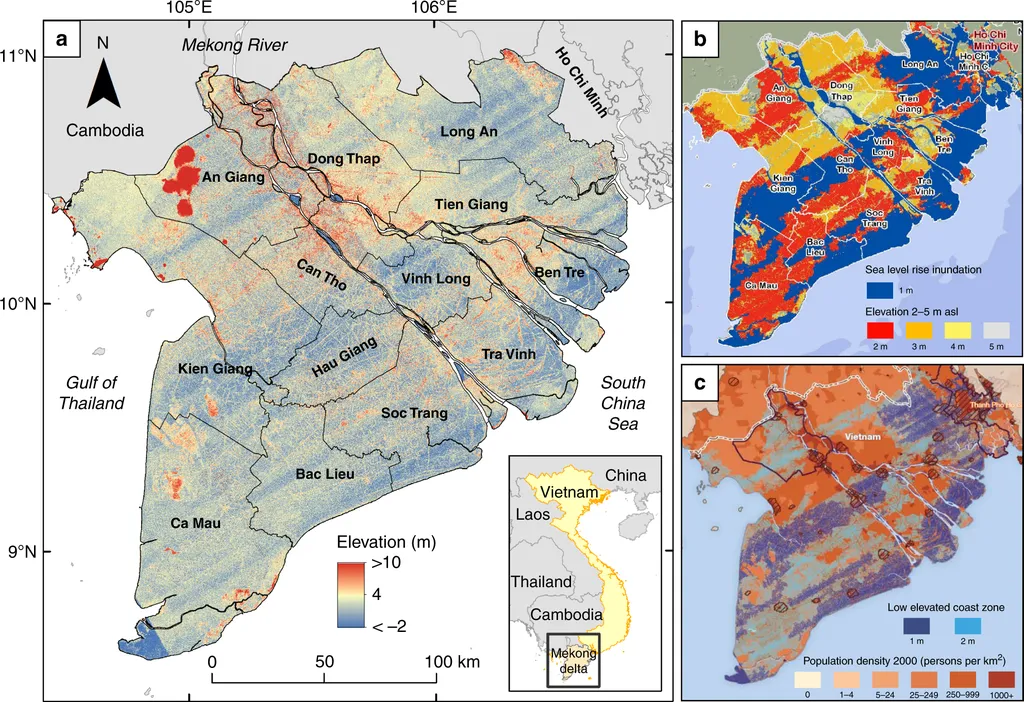In the heart of Vietnam’s Mekong Delta, the Ca Mau Peninsula (CMP) stands as a vital hub for agriculture and aquaculture, underpinning regional food security and economic stability. However, this critical region is under siege from a multitude of natural and human-induced threats, with climate change and land subsidence exacerbating existing flood risks. A recent study, led by H. Nghia Nguyen of the Southern Institute of Water Resources Research in Ho Chi Minh City, Vietnam, sheds light on the complex interplay of these factors and their potential impact on the region’s future.
The study, published in the journal ‘Natural Hazards and Earth System Sciences’ (translated as ‘Tự Nhiên Thảm Hiểm và Hệ Thống Trái Đất’ in Vietnamese), employs a sophisticated hydrodynamic model to assess the impact of various drivers on coastal inundation in the CMP. The model, enhanced with updated bathymetric data and synchronized dyke information, offers a comprehensive view of the region’s flood dynamics.
Nguyen and his team considered a range of future scenarios, both individual and combined, to evaluate the potential impacts of anthropogenic and climate changes. Their findings reveal that while upstream high flows, riverbed lowering, and storm surges have limited impact on regional inundation, land subsidence and sea level rise emerge as the primary drivers of future flood escalation.
“The combined effects of land subsidence and sea level rise are particularly concerning,” notes Nguyen. “They not only increase the extent of inundation but also intensify its impact, posing significant challenges for the region’s infrastructure and economy.”
For the energy sector, these findings carry substantial implications. The Mekong Delta is home to critical infrastructure, including power plants and transmission lines, which are vulnerable to flood damage. Moreover, the region’s agricultural productivity is closely tied to energy consumption, with irrigation and aquaculture operations relying heavily on electricity.
As Nguyen points out, “Understanding these risks is crucial for strategic planning and investment in infrastructure systems. It’s not just about mitigating flood damage but also about ensuring the resilience of the region’s energy supply.”
The study’s insights are expected to inform development policies and investment strategies, helping stakeholders devise effective flood management plans. By anticipating and addressing these challenges, the region can safeguard its economic and social welfare, ensuring a sustainable future for the Ca Mau Peninsula and the broader Vietnamese Mekong Delta.
In an era of climate change and rapid development, such research is more critical than ever. As Nguyen concludes, “This is not just about predicting the future; it’s about shaping it. And the time to act is now.”

